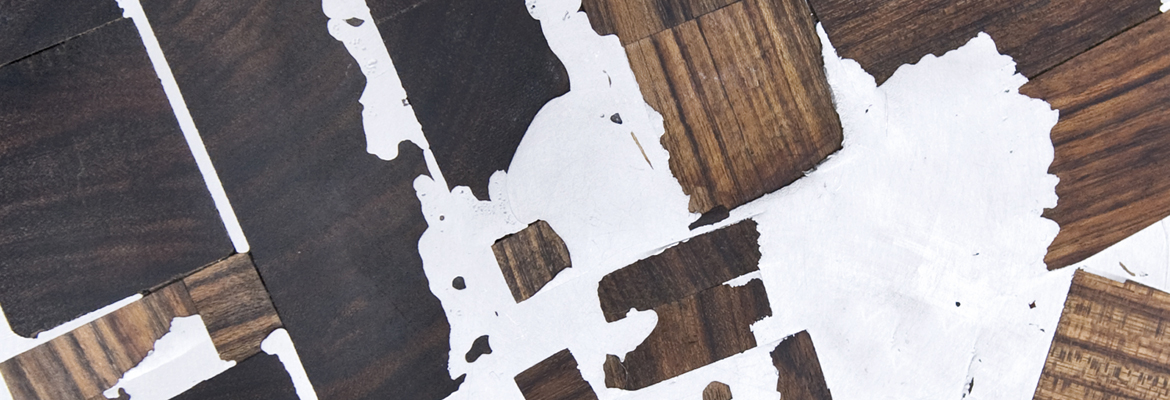It has already been a few years since the media started talking increasingly often about the regenerative economy: an economy born out of the cooperation between different trades acting within the same territory. A symbiotic economy, based on the possibility that some business’ or trade’s waste (not only materials, but, for example, also power and water) become by-products and are used by another company.
It is a seemingly new frontier aimed at sparking off a virtuous circle of matter. In fact, the idea of industrial symbiosis is quite old. After having set an example with Gunter Pauli’s Breakthroughs (Epsilon Press 1996), it was consequently mentioned by the European Union as a tool the Member States should equip themselves with in their transformation strategies towards a sustainable economy – “Roadmap to a Resource Efficient Europe,” COM (2011) 571. Few years later, the European Union reminded us – “Green Action Plan for SMEs,” COM (2014) 440 – that 44% of big European companies sell their own discarded materials to another company, while only 24% of SMEs do the same.
However, one of the first, actual examples of industrial symbiosis had already been set up in the Seventies. Over the years, in the Danish town of Kalundborg – 20,000 inhabitants; 100 km from Copenaghen – a complex exchange network has formed, involving resources such as water, power, and a considerable amount of industrial waste having become secondary raw material for other processes. Born as a private initiative, today, the network concerns the whole urban area. It is also often mentioned as an emblematic example, indeed because it did not result from urban and industrial planning, but it developed naturally thanks to voluntary and lucrative bilateral agreements that succeeded in reducing production costs by guaranteeing access to less expensive secondary resources and to the remunerative disposal of process waste.
Of course, there are also other cities where the public sector has promoted interesting initiatives. Suffice it to think of Amsterdam, Birmingham, and Stockholm, whose municipalities have devised a mapping system for used materials’ flows, in order to detect the chances of recovering, reusing, and integrating them. Or to projects such as Retrace, set up by the Department of Architecture and Design of the Polytechnic of Turin and aimed at an intelligent, sustainable, and inclusive planning which is able to anticipate – for any single moment of products’ lifecycle – waste control and, in case it is produced, its exploitation.
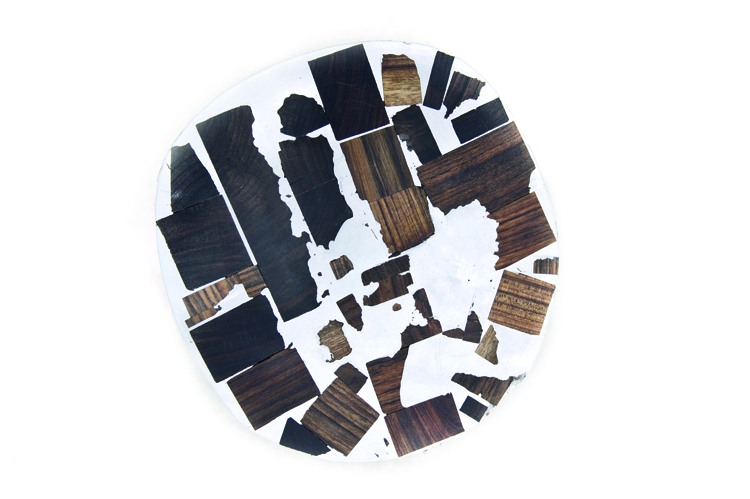 |
|
Studio Pepe Heykoop, Bits Of Wood 3. Photo by Annemarijne Bax
|
Some years ago, in Italy, ENEA (Italian National Agency for New Technologies, Energy and the Sustainable Economic Development), thanks to RISE’s work (a laboratory for resources’ development in productive and territorial systems), set up Symbiosis. The latter is a platform of industrial symbiosis available to the local companies and operators, with an aim to match supply and demand and setting up transfers of resources and agreements on materials, energetic by-products, water, services, and skills.
In addition, Symbiosis cooperates with some Italian regions (Friuli Venezia Giulia, Emilia-Romagna, Tuscany, Latium, and Sicily) and with the Italian Ministry of Economic Development.
However, aside from their value, the fact remains that such experiences need to become models and be spread as much as possible, since only in this way it will be possible to repeat them.
Meeting Used Matter
In order to promote and give expression to the symbiotic processes’ outputs, businesses turn to creatives. Sometimes, the latter’s meeting with used matter – with waste – has an individual reason and new objects are produced overturning almost entirely their original functions. If in the Twenties Dadaists had called this ready-made – even though the first who did something similar was Marcel Duchamp in 1913 – today, the reasons behind it are completely different.
Companies promoting these virtuous practices know perfectly well that if the latter are not communicated effectively, they risk losing most of their value.
Accordingly, there is a call for creatives and designers not only to shape new outputs, but also to describe the paths followed by matter in a captivating, attractive way.
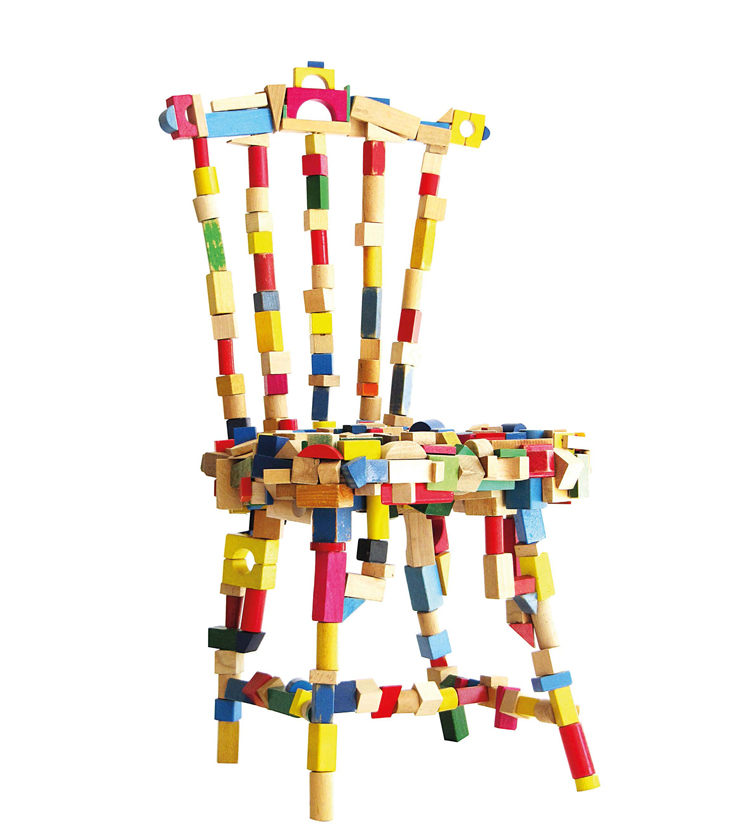 |
|
Studio Pepe Heykoop, Brickchair 1
|
When the meeting between discarded matter takes place privately – often not serial and, thus, occasional – and creative thinking, there is the risk of sparking off again an ancient debate on what “is or is not”design. Vico Magistretti, Italian designer and architect (1920-2006), would say sententiously that “if an object is not produced in at least a few thousand pieces, it is not a design artefact.” However, the Sixties, the Seventies, and the Eighties are very far in time. Meanwhile, many things have changed and designers have started to carry out their own projects by themselves (thus turning them into products) and have consequently become micro-businesses without middlemen. Similarly, the reuse of spaces, architecture, matter, clothes, and components has become a must: a pulverisation of making where, seemingly, there is a place for everyone.
But beware: reuse can also be a serious affair, firstly because, thanks to its diffusion, it is imposing itself as aesthetic category, similarly to what happened with the ethnic style in the late Nineties; secondly, because it is socially inclusive and succeeds in giving sense to often forgotten manual skills. In addition, reuse easily involves public and private stakeholders, thus establishing a communication between agents that, by crafting discarded matter with a hint of creativity, find the code for mutual understanding. Lastly, it brings designers back to issues such as the restoration of an identity for stratifications of different components; the use and combination of colour spectres and of materials that, sometimes, cannot age decently and that come back to life in unusual forms. The disassembling aimed at reassembling forces one to express unforeseen virtues: what used to be a filling can be converted into a surface and what used to be cut up is now reassembled. Memory of what things used to be like gets lost to be recovered; things once born as not repairable can become so, and so on. Thus, discarded matter becomes the travelling companion of a journey does not seem to have, at first, a destination but that, in fact, reveals itself through making.
At the moment, this is a universe of pulverized experiences, restricted to a market niche producing not very much, yet having interesting consumer prices. It is necessary to actually enter the market. There is a need for the ability to commercialize and enhance efforts in the best possible way, as well as professional competences are required which can boost such experiences by stimulating demand and, consequently, acting on knowledge and diffusion. Buyers must know that this option exists and they must be able to locate, identify, and appreciate it. This is why knowledge and access are two crucial points. Reuse has no fathers and no consortium will be created to finance and support it. Consequently, self-management rules supreme and various networks have already been created which are able to connect more re-creators and magnify the effect of their disseminated wit.
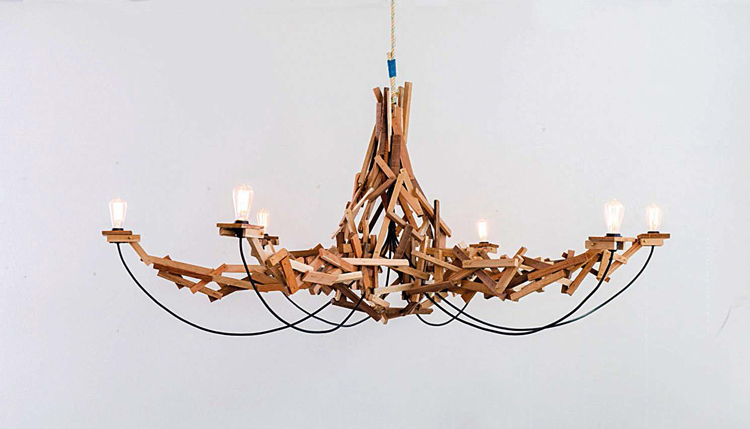 |
|
Studio Pepe Heykoop, Chandelier. Photo by Annemarijne Bax
|
Images: Bricks and Bits of Wood
Pepe Heykoop graduated in 2008 from the Design Academy in Eindhoven. Heykoop often focuses his designing/autoproducing activity on discarded and recovered matter, manufacturing truly surprising objects. www.pepeheykoop.nl
“A Systemic Approach for REgions TRAnsitioning towards a Circular Economy”, www.interregeurope.eu/retrace
Symbiosis, www.simbiosiindustriale.it/Simbiosi-Industriale
Networks and Communities
Appcycle
Appcycle is a project based on a community that uses the Web to aim at a circular economy applied to the recovery of unused matter. On the portal, donors and re-creators can interact: the former, namely those who manage or produce waste – i.e. unused matter – make available to others the material which, in turn, will be traced in order to obtain information on its destination, transformation, and CO2 saving and to gain the pre-emption right over the purchase of what the re-creators will produce. The latter are designers and craftsmen that, through upcycling logics, will choose what “waste” to use in order to produce new outputs, also by uploading tutorials on the re-elaboration phases. Eventually, there is a shopping area where it is possible to sell these objects. In 2016, Appcycle attended “Icché ci vah ci vole” – an experimental festival for the creation of shared imaginations – where it introduced its platform to Source – Self made Design, a project whose aim is to connect the universe of creatives from the design world to businesses and small and medium enterprises in the field of production and distribution. Starting from February 2017, Appcycle will enter the incubator CoopUp within the project OPP! – Confcooperative’s network of young cooperative entrepreneurs.
Reusing cities
The reuse of cities is an extremely topical subject, which was much discussed at the 1st Legambiente’s Festival of Civil Economy (17th/19th November 2016, Campi Bisenzio, Florence) with Enrico Fontana, co-author and editor of Legacoop’s book “Regenerating Cities.” The two subjects have been cooperating for some time, also thanks to an agreement protocol for promoting business plans aimed at developing a network of community cooperatives, which commit to the protection of public and common properties by restoring neglected constructions and enhancing local communities. Special mention is deserved by www.riusiamolitalia.it and www.universitadelriuso.it: these two platforms conceived by Gianni Campagnoli are rich in original tips, useful data and ideas for rethinking the future of neglected places.
Then we have www.kcity.it, one of the 12 organizations that founded the international network Urban Renaissance, which connects innovative professional firms active in six countries by gathering skills ranging from landscape to planning and economics, in order to promote integrated interventions of urban regeneration.
Lastly, there is Salento Solidale, an operation by association Coppula Tisa, which turned a roadman’s house called Celacanto, in the town of Marina Serre di Tricase (Apulia), into a gathering centre for local non-profit organisations. All the furniture has been obtained exclusively from the disused wooden beams of the area’s abandoned tobacco factories.
Ri.Accademia
This research project on reuse and the circular economy was born in Turin in 2013 from the meeting between Cristian Campagnaro and Claudia De Giorgi – Professors of the Department of Architecture and Design of the Polytechnic of Turin – Antonio Castagna – educator and advisor on such topics – the social cooperatives Triciclo and Liberi Tutti, the association Mana-Manà, and the artist Walter Visentin. A first activity of research and action has investigated possible ways of reusing and exploiting melamine veneered particleboards from the disused furniture’s supply chain. It is available in great quantities, it does not have a commercial value after its use, and it presents itself as a material with a low quality of expression and a quick semantic obsolescence, though it maintains good mechanic properties. The research path is structured on three levels of experiment.
- Upcycling: studying in depth how recovered semi-finished products become suitable for new product solutions identifiable by consumers and having economic value.
- Cooperative supply chains: giving prominence to relationships and co-design in order to remove the mainly semantic and expressive restrictions which, today, are limiting reuse processes.
- New utilizations of wood shavings: testing appropriate technological processes aimed at disassembling materials and recovering matter for new products’ creation.
Rreuse
Born in 2001, Reuse and Recycling European Union Social Enterprises is a European platform promoting the development of social businesses operating in materials’ recovery, reuse, and recycling. It groups over 20 national and regional networks located in more than ten EU countries. The recent report Reuse in the UK and Ireland by the British Chartered Institution of Wastes Management (Ciwm) states that reuse is distinguishing itself and growing considerably – despite the lack of strategies of the current government – but this trade’s progress could be sped up by confronting issues such as delivery and strategic communication and commitment of businesses’ top managers.
Report Ciwm, “Reuse in the UK and Ireland,” tinyurl.com/ht5jktx
Etsy
With respect to disseminated creativity, the platform Etsy, which, in fact, has a B Corp certification (B Corps are companies that keep up voluntarily to the highest standards of purpose, responsibility, and transparency – editor’s note), plays a role of promotion and sale of handcrafted products created by privates in small and very small series, or as unique specimen, though not necessarily obtained from reuse. Another curious case is that of Ikea Hackers: she is a young blogger suggesting innovative solutions for giving Ikea’s products a new look or function.
Campagnoli G., “Riusiamo l’Italia – Da spazi vuoti a start-up culturali e sociali,” Il Sole 24 Ore, 2014
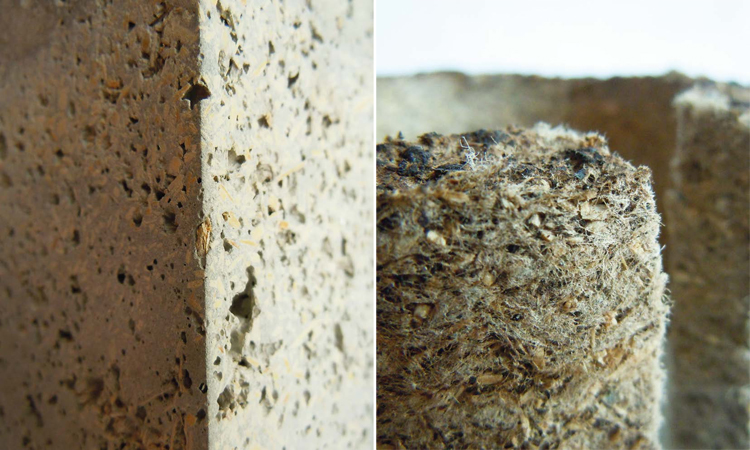 |
|
Samuele Baruzzi. 2016, Una materia prima di terza generazione (“Third-generation raw material”). Experiment on faced chipboard reuse, Design and Communication Course thesis, supervisor C. Campagnaro. From left to right:
|


